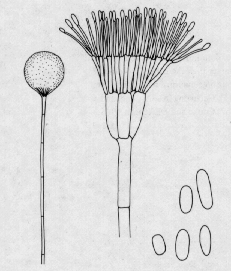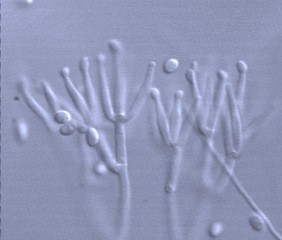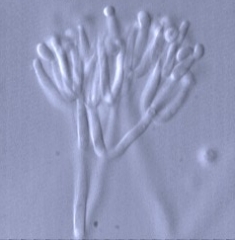Main page <> Index of descriptions <> Previous description <> Gliocladium <> Next description
Gliocladium



Conidiophores erect, terminated by a dense brush-like branching system bearing tapered phialides. The spores (conidia) are colourless, or green and are produced in a dense wet mass from the phialides. The spore-bearing structures are fairly large and complex as in the illustration of G. penicillioides at left. Species of Gliocladium are similar to those of Penicillium but with conidia collecting in wet rather than dry masses.
For many years Clonostachys rosea (two photos at right) was maintained in Gliocladium as G. rosum but is now known to be a member of the Bionectriaceae as an anamorph of Bionectria and Roumegueriella species.
Species of Gliocladium occur in soil or decaying plant matter where they frequently are reported as parasites of other fungi. Some can become pests in petri dish cultures, overrunning the colonies of other fungi.
Classification: Hypocreaceae. Holomorphs: Sphaerostilbella, Hypocrea and other Hypocreales. Refs: Domsch, Gams and Anderson, 1980; Morquer et al., 1963; Raper and Thom, 1949.